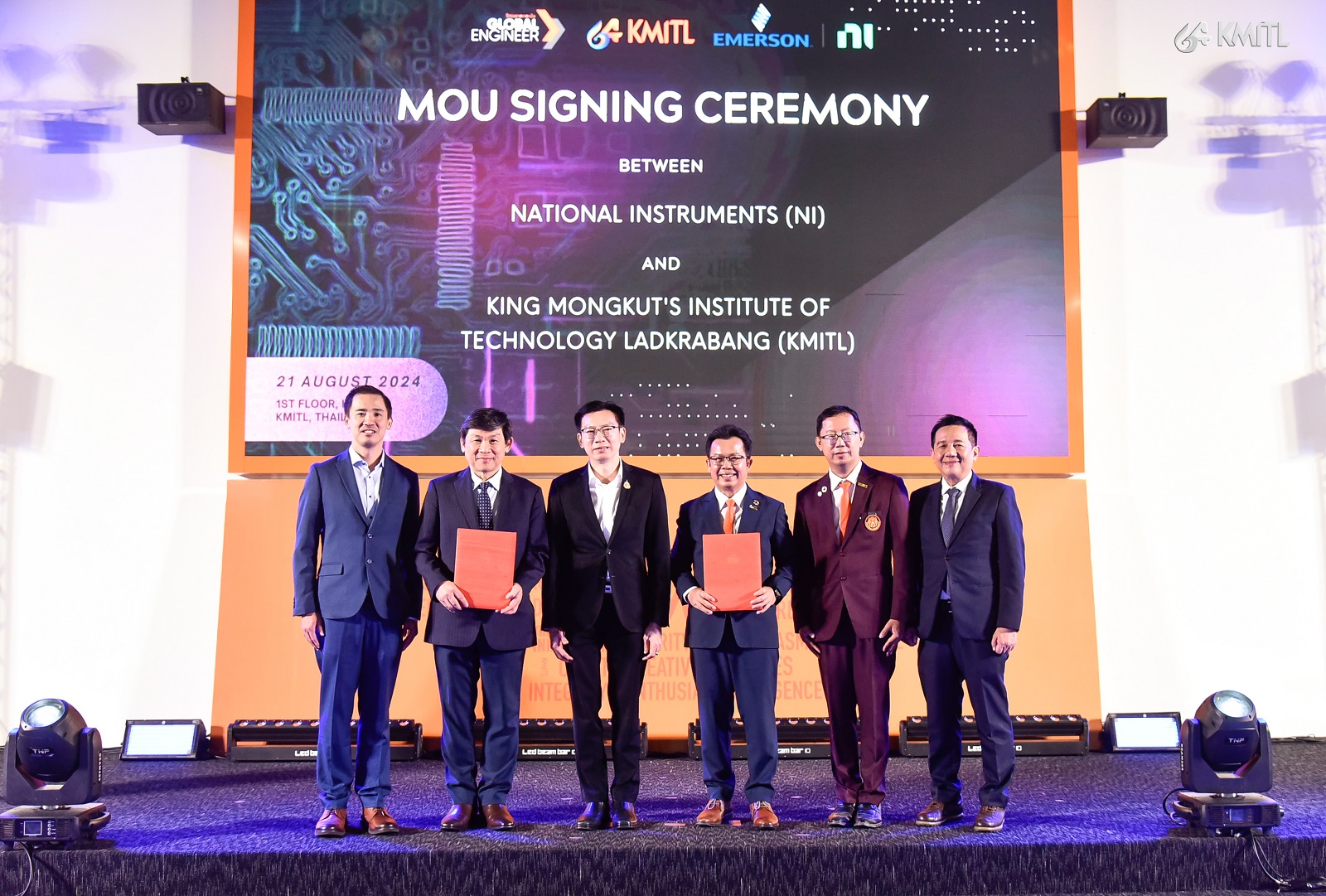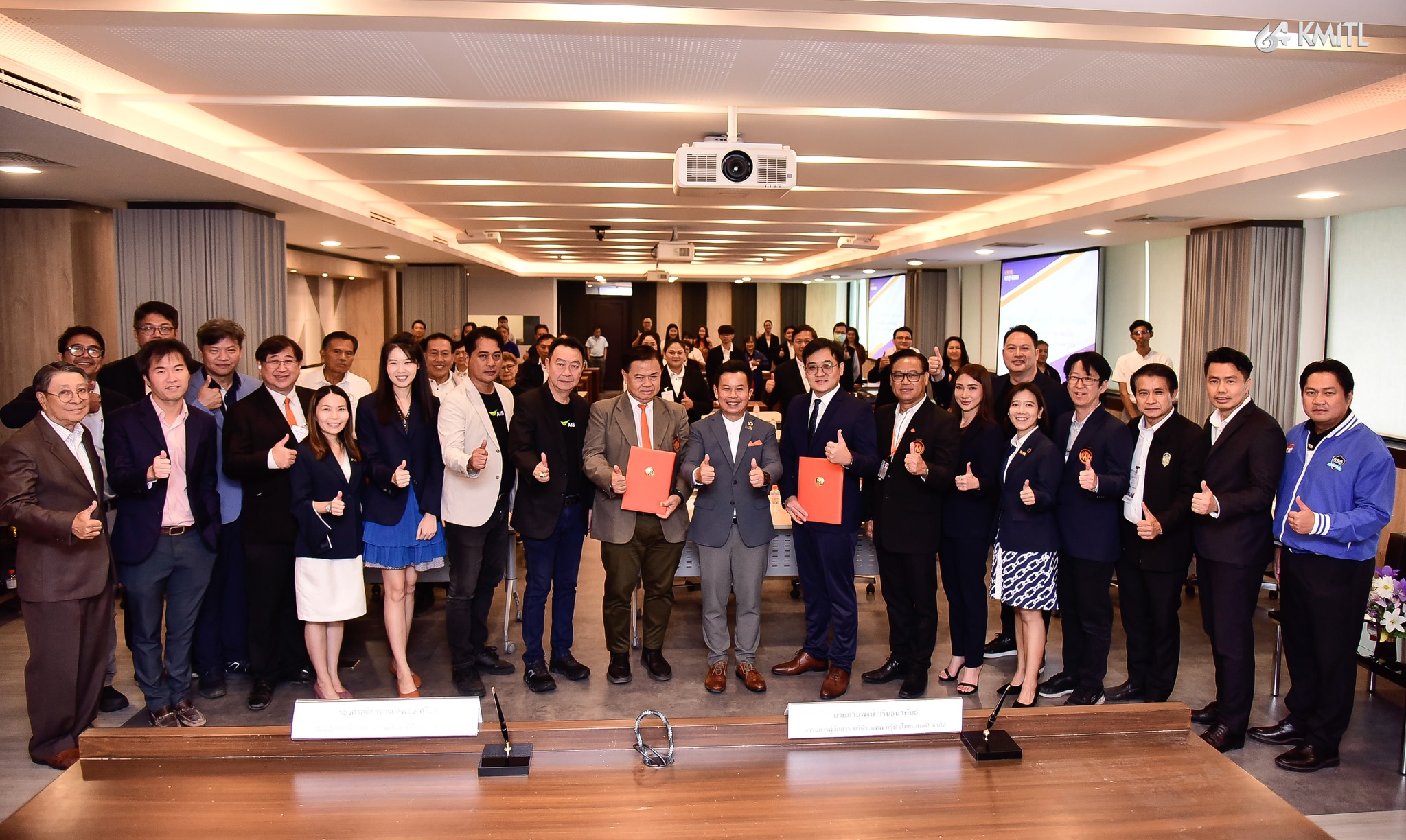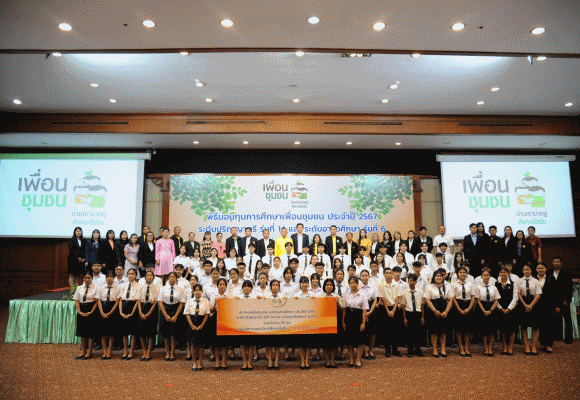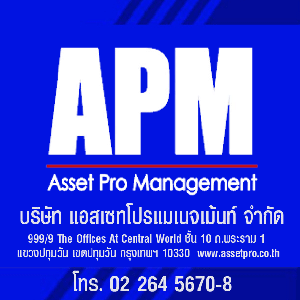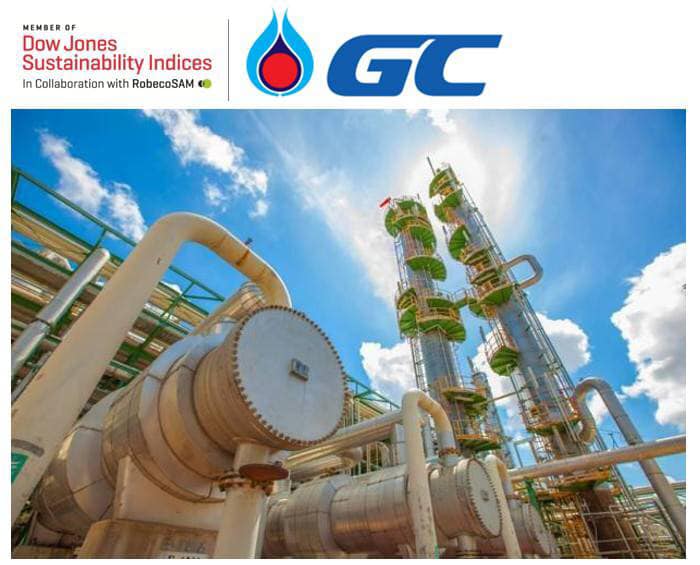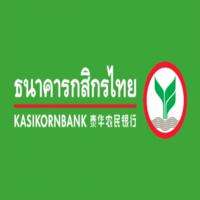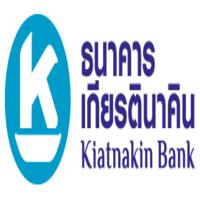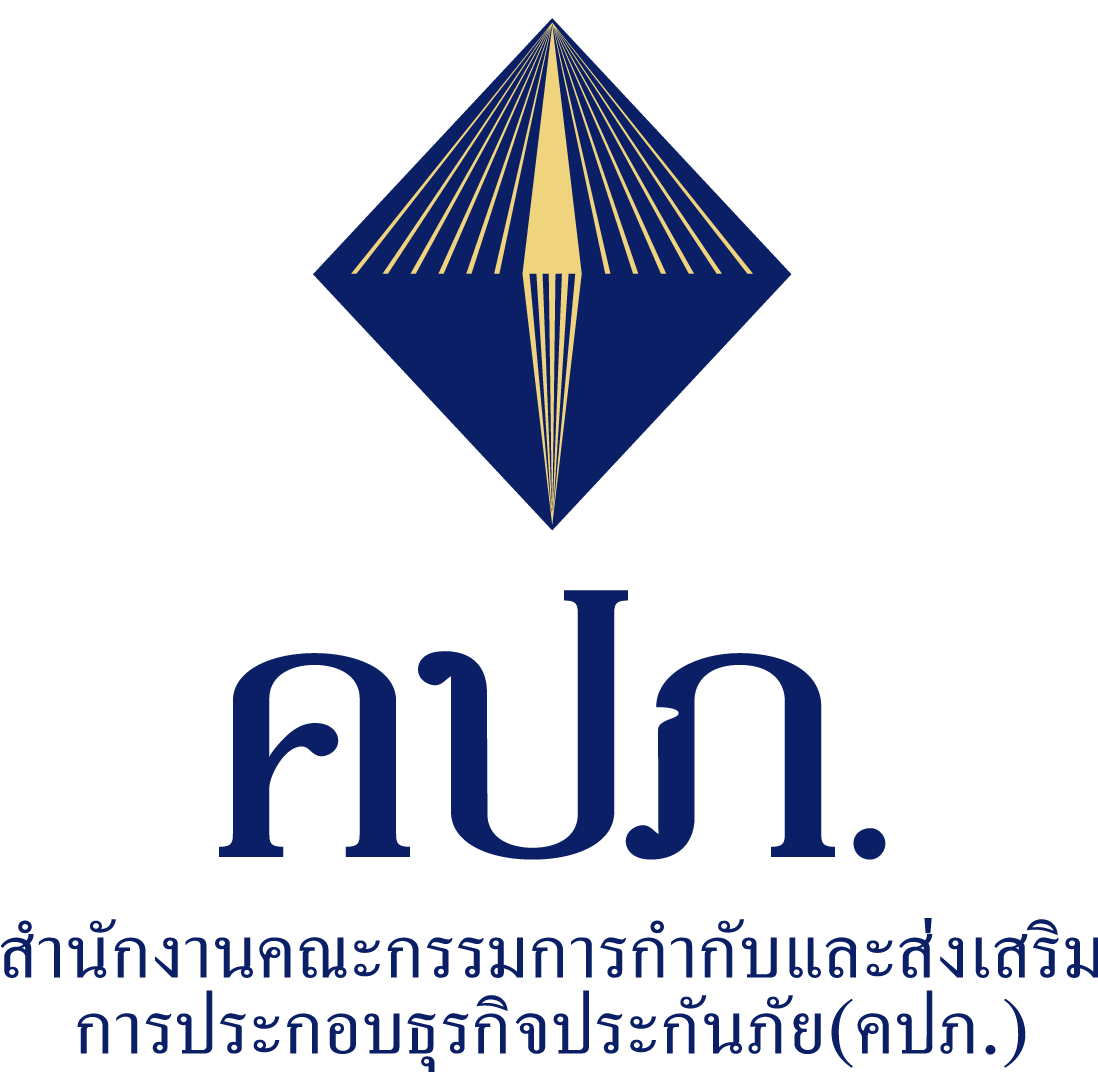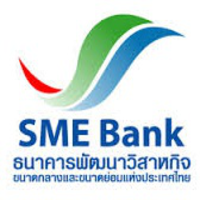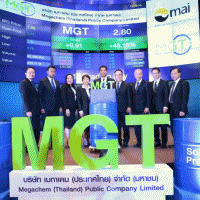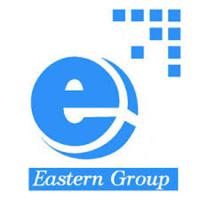- Details
- Category: อสังหาริมทรัพย์ฯ
- Published: Friday, 12 April 2019 18:09
- Hits: 51923
 EIC ส่องตลาดรับเหมา M&E ปีนี้จะเติบโตอย่างไร?
EIC ส่องตลาดรับเหมา M&E ปีนี้จะเติบโตอย่างไร?
ตลาดงานระบบ Mechanical & Electrical (M&E) หรืองานระบบสาธารณูปโภค ซึ่งประกอบไปด้วย งานระบบไฟฟ้า ประปา และระบายอากาศ มีแนวโน้มขยายตัวโดยได้รับปัจจัยสนับสนุนจากการก่อสร้างทั้งภาครัฐและภาคเอกชน โดยอีไอซีประเมินว่า มูลค่าตลาดงานระบบ M&E ในปี 2019 จะเติบโตที่ราว 8%YOY มาอยู่ที่ราว 1.85 แสนล้านบาท และเติบโตต่อเนื่อง 4%CAGR ในระยะกลาง (2020-2022)
ในด้านผู้ประกอบการ รายได้ของผู้รับเหมา M&E ขนาดใหญ่ มีโอกาสเติบโตมากที่สุดที่ราว 7%CAGR ในระยะกลาง โดยได้รับอานิสงส์จากเมกะโปรเจกต์คมนาคมของภาครัฐ ในขณะที่รายได้ของผู้รับเหมาขนาดกลาง M&E คาดเติบโตประมาณ 5%CAGR จากการพัฒนาอาคารสำนักงานในบริเวณกรุงเทพฯ ซึ่งปัจจุบันมี occupancy rate สูงถึงราว 90% ส่งผลให้มีแนวโน้มการสร้างอาคารสำนักงานเพิ่มขึ้น ส่วนรายได้ของผู้รับเหมา M&E ขนาดเล็กคาดว่าจะเติบโตได้น้อยที่สุดที่ราว 1%CAGR เนื่องจากมีปัจจัยกดดันด้านการแข่งขันที่สูงกว่าผู้รับเหมากลุ่มอื่น
สำหรับปริมาณงานที่เพิ่มขึ้นในอนาคต ผู้รับเหมา M&E ควรเตรียมความพร้อมใน 3 ด้าน ได้แก่ ทรัพยากรบุคคล, เงินทุนหมุนเวียน และ การบริหารปริมาณงานคงค้างในมือ ซึ่งเป็นปัจจัยสำคัญในการขับเคลื่อนธุรกิจให้ประสบความสำเร็จ
งานวิศวกรรมระบบสาธารณูปโภคถือเป็นขั้นตอนสำคัญของการก่อสร้าง โดยมีสัดส่วนมูลค่าตลาดราว 12-15% ของตลาดงานก่อสร้างทั้งหมด โดยทั่วไป งานก่อสร้างประกอบไปด้วย 3 ส่วนสำคัญ ได้แก่ งานโยธา งานระบบสาธารณูปโภค (Mechanical & Electrical, M&E) และงานสถาปัตยกรรม ซึ่งในปี 2018 ที่ผ่านมามูลค่าตลาดของอุตสาหกรรมก่อสร้างไทยรวมทั้งภาครัฐและภาคเอกชนอยู่ที่ราว 1.3 ล้านล้านบาทและคาดว่าจะเติบโต 6%CAGR ในระยะกลาง (2019-2022) ซึ่งการขยายตัวของภาคก่อสร้างไทยนั้นไม่เพียงแต่จะส่งผลดีต่อผู้รับเหมางานโยธา แต่ยังเป็นประโยชน์ต่อธุรกิจอื่นในอุตสาหกรรมรวมถึงธุรกิจรับเหมางานระบบ M&E ซึ่งมีมูลค่าคิดเป็นสัดส่วนราว 12-15% ของมูลค่าตลาดก่อสร้างรวม และประกอบไปด้วย 3 ส่วนหลัก ได้แก่ งานระบบไฟฟ้า งานระบบประปา และงานระบบปรับอากาศ ซึ่งมีสัดส่วนราว 6%-8%, 3%-5% และ 3%-5% ของมูลค่าตลาดก่อสร้างรวม ตามลำดับ ทั้งนี้งานระบบ M&E สามารถดำเนินงานควบคู่ไปกับงานโครงสร้างหลักได้หลังจากงานโครงสร้างเบื้องต้น เช่น งานฐานรากแล้วเสร็จ จึงส่งผลให้การรับรู้รายได้ของงานระบบ M&E มักจะอยู่ในช่วงครึ่งหลังของการก่อสร้างโครงการ
ในปี 2019 อีไอซีคาดว่า มูลค่าตลาดงานระบบ M&E จะเติบโตราว 8%YOY มาอยู่ที่ราว 1.85 แสนล้านบาท และมีแนวโน้มเติบโตต่อเนื่องที่ 4%CAGR ในระยะกลาง (2020-2022) โดยมีแรงขับเคลื่อนจากการเติบโตของโครงการก่อสร้างภาคเอกชนและโครงการก่อสร้างภาครัฐ งานระบบ M&E ในโครงการก่อสร้างภาคเอกชนมีสัดส่วนประมาณ 75-80% ของมูลค่าตลาดรวมหรือประเมินว่ามีมูลค่าราว 1.4 แสนล้านบาทในปี 2019 และคาดว่าจะมีแนวโน้มขยายตัวราว 5%CAGR ในระยะกลาง โดยได้รับปัจจัยสนับสนุนหลักจากการขยายตัวของโครงการก่อสร้างภาคเอกชน ประเภทอาคารพาณิชย์และที่พักอาศัย เช่น อาคารสำนักงานซึ่งปัจจุบันมีอัตราการเช่าพื้นที่ (occupancy rate) ที่สูงถึงราว 90% จึงทำให้ต้องมีการก่อสร้างอุปทานใหม่เพิ่มขึ้น
รวมถึงโครงการอสังหาริมทรัพย์แบบผสมผสานหรือมิกซ์ยูสที่กำลังได้รับความนิยมจากเอกชนรายใหญ่เพราะได้ผลตอบแทนจากการลงทุนสูง คอนโดมิเนียมที่ก่อสร้างตามการขยายเส้นทางของรถไฟฟ้า ในขณะที่งานระบบ M&E ในโครงการก่อสร้างภาครัฐ แม้ว่าจะมีสัดส่วนน้อยกว่าที่ราว 20-25% ของมูลค่าตลาดรวมหรือประมาณ 4.5 หมื่นล้านบาท ในปี 2019 แต่มีแนวโน้มเติบโตได้ดีกว่างานของภาคเอกชน โดยมีอัตราการเติบโตราว 6%CAGR ในระยะกลาง เนื่องจากได้รับปัจจัยผลักดันจากงานระบบ M&E จากโครงการเมกะโปรเจกต์ เช่น สนามบิน ท่าเรือ และ สถานีรถไฟฟ้า/รถไฟทางคู่ ที่จะมีการลงทุนอีกกว่าปีละ 2-4 แสนล้านบาทในช่วงเวลาดังกล่าว
รูปที่ 1: มูลค่าตลาดงานระบบ M&E คาดว่าจะเติบโตราว 8%YOY ในปี 2019 และโตต่อเนื่อง 4% ต่อปีในระยะกลาง (2019-2022)
หน่วย: พันล้านบาท
ที่มา: การวิเคราะห์โดย EIC จากข้อมูลของ NESDB และ กระทรวงคมนาคม
การเติบโตของตลาดงานระบบ M&E คาดส่งผลให้รายได้ผู้ของรับเหมางานระบบ M&E 3 กลุ่มมีการเติบโตในช่วง 1%-7%CAGR ในระยะกลาง จากการศึกษากลุ่มตัวอย่างบริษัทผู้รับเหมางานระบบ M&E จำนวนประมาณ 2,400 บริษัท ซึ่งมีส่วนแบ่งการตลาดรวมกันราว 85% โดยผู้รับเหมางานระบบ M&E เหล่านี้สามารถแบ่งได้ 3 ประเภทตามลักษณะงานที่รับและรายได้ ได้แก่ 1) ผู้รับเหมาขนาดใหญ่ M&E ที่มีความเชี่ยวชาญงานอาคารขนาดใหญ่ เช่น คอนโดมิเนียม อาคารพาณิชย์ และโรงงานอุตสาหกรรม รวมไปถึงงานเมกะโปรเจกต์ ทำให้มีรายได้เฉลี่ยมากกว่า 500 ล้านบาทต่อปี 2) ผู้รับเหมา M&E ขนาดกลาง ซึ่งสามารถรับงานอาคารขนาดใหญ่เช่นเดียวกับผู้รับเหมาขนาดใหญ่ แต่ไม่สามารถรับงาน M&E ในงานเมกะโปรเจกต์ได้ ทำให้มีรายได้เฉลี่ย 75-500 ล้านบาทต่อปี และ 3) ผู้รับเหมา M&E ขนาดเล็ก ที่เน้นรับงานประเภทบ้านเดี่ยว ตึกแถว และอาคารขนาดเล็ก รวมถึงการรับเหมาช่วง (subcontract) จากรายใหญ่และรายกลาง โดยมีรายได้เฉลี่ยต่ำกว่า 75 ล้านบาทต่อปี
ในระยะกลาง (2019-2022) อีไอซีประเมินว่า รายได้ของผู้รับเหมา M&E ทั้ง 3 กลุ่มมีแนวโน้มเติบโตตามปริมาณงานระบบ M&E ที่เพิ่มขึ้น โดยคาดว่าผู้รับเหมา M&E ขนาดใหญ่จะเติบโตต่อราว 7%CAGR มาอยู่ที่ราว 9.3 หมื่นล้านบาทในปี 2022 เนื่องจากมีความสามารถในการรับงานเมกะโปรเจกต์ ตามด้วยผู้รับเหมา M&E ขนาดกลาง ที่คาดเติบโต 5%CAGR มาอยู่ที่ราว 5 หมื่นล้านบาท ตามการเติบโตของอาคารพาณิชย์ขนาดใหญ่ ในขณะที่ผู้รับเหมา M&E ขนาดเล็กคาดว่าจะเติบโตน้อยที่สุดที่ราว 1%CAGR มาอยู่ที่ประมาณ 4.3 หมื่นล้านบาท ซึ่งมีปัจจัยกดดันมาจากการแข่งขันระหว่างผู้รับเหมาขนาดเล็กที่สูงกว่ากลุ่มอื่นสะท้อนจากตัวเลขจดทะเบียนบริษัทใหม่ที่เพิ่มขึ้นอย่างต่อเนื่องปีละมากกว่า 1,000 บริษัท
รูปที่ 2: รายได้ของผู้รับเหมาทั้ง 3 กลุ่ม มีโอกาสเติบโตตามปริมาณงานที่เพิ่มขึ้นในช่วงปี 2018-2022
หน่วย: พันล้านบาท
ที่มา: การวิเคราะห์โดย EIC จากข้อมูลของ BOL-ENLITE
นอกจากนี้ โมเดลธุรกิจเป็นส่วนสำคัญที่ส่งผลต่อการเติบโตของรายได้ของผู้รับเหมา M&E โดยโมเดลธุรกิจแบบเน้นรับงานเฉพาะทางสามารถสร้างรายได้เติบโตดีกว่าโมเดลธุรกิจที่รับงานได้หลายประเภทราว 15% ในช่วง 5 ปีที่ผ่านมา โมเดลธุรกิจของผู้รับเหมางานระบบ M&E สามารถแบ่งได้เป็น 2 ประเภทคือOne-Stop-Service (OSS) ที่สามารถรับงานระบบ M&E (ระบบไฟฟ้า, ระบบปรับอากาศ และระบบประปา) ได้ตั้งแต่ 2 ประเภทขึ้นไป และWork Package Contractor (WPC) ซึ่งเน้นรับงานเฉพาะทางชนิดเดียว ซึ่งจากการศึกษากลุ่มตัวอย่างในแต่ละโมเดลธุรกิจ พบว่าในช่วง 5 ปีที่ผ่านมา รายได้ของผู้รับเหมา M&E ที่เน้นรับงานเฉพาะทาง (WPC) เติบโตได้ดีที่ราว 17%CAGR โดยเฉพาะผู้รับเหมาที่มีความเชี่ยวชาญในกลุ่มงานที่มีความซับซ้อน เช่น ระบบไฟฟ้าอัจฉริยะ ระบบไฟฟ้าสื่อสาร ในขณะที่ผู้รับเหมา M&E ที่ใช้โมเดลธุรกิจ OSS มีรายได้เติบโตราว 2%CAGR ซึ่งเป็นอัตราการเติบโตที่ใกล้เคียงกับอุตสาหกรรม M&E อย่างไรก็ตาม ผู้รับเหมา M&E ที่ใช้โมเดลธุรกิจแบบ OSS ยังคงมีความได้เปรียบในการประมูลงาน เนื่องจากมีความเชี่ยวชาญในการคำนวณต้นทุนของทุกส่วนงานและมีอำนาจในการต่อรองกับซัพพลายเออร์เพราะมีประสบการณ์ในการสั่งซื้อวัสดุในปริมาณมากกว่าผู้รับเหมากลุ่ม WPC
ส่วนต้นทุนการดำเนินงานมีโอกาสปรับตัวเพิ่มขึ้นราว 5%CAGR ในระยะกลางซึ่งใกล้เคียงกับการเติบโตของรายได้ ต้นทุนการดำเนินงานประกอบไปด้วย ต้นทุนค่าวัสดุอุปกรณ์ 65% รองลงมาคือค่าแรง 25% และค่าใช้จ่ายอื่นอีกราว 10% โดยวัสดุหลักที่ใช้ในงานระบบ M&E ประกอบไปด้วย ท่อเหล็กชุบสังกะสี ท่อพลาสติกชนิด High Density Polyethylene (HDPE) และ สายไฟ ซึ่งมีสัดส่วนรวมกันถึง 30-45% ของต้นทุนค่าวัสดุทั้งหมด ส่วนที่เหลือคือวัสดุอุปกรณ์ประเภทเครื่องปรับอากาศ และตู้สวิตช์บอร์ด เป็นต้น อีไอซีประเมินว่า ต้นทุนวัสดุอุปกรณ์ทั้งหมดมีแนวโน้มเติบโตราว 5%CAGR ในระยะกลาง โดยราคาท่อเหล็กชุบสังกะสีมีแนวโน้มลดลงราว 2%CAGR จากการบริโภคเหล็กแผ่นซึ่งเป็นวัตถุดิบในการผลิตท่อเหล็กชุบสังกะสีที่ได้รับผลกระทบจากการชะลอตัวในภาคอุตสาหกรรมยานยนต์และก่อสร้างของจีน ในขณะที่ราคาของท่อ HDPE มีแนวโน้มทรงตัวจากราคาน้ำมันดิบที่เป็นวัตถุดิบที่ใช้ในการผลิตท่อ HDPE มีแนวโน้มลดลงจากกำลังผลิตที่เพิ่มขึ้นในสหรัฐฯ อย่างไรก็ดี ความต้องการใช้งานท่อ HDPE ในภาคก่อสร้างไทยที่ยังขยายตัวจะมีส่วนช่วยพยุงราคาท่อ HDPE ให้คงที่ เช่นเดียวกับราคาสายไฟซึ่งมีทองแดงเป็นวัสดุหลักมีแนวโน้มทรงตัว โดย World Bank คาดการณ์ว่า ราคาทองแดงมีแนวโน้มทรงตัวในระยะกลาง ตามการเติบโตของเศรษฐกิจโลกและการเพิ่มขึ้นของอุปทานในอัตราใกล้เคียงกัน
ในขณะที่ต้นทุนแรงงานมีแนวโน้มเติบโตประมาณ 5%CAGR ในระยะกลาง ซึ่งเป็นผลมาจากทั้งความต้องการแรงงานและค่าแรงภาคก่อสร้างที่ปรับตัวเพิ่มขึ้น โดยปริมาณงานระบบ M&E ที่เพิ่มขึ้นจะส่งผลให้ความต้องการจ้างแรงงานสำหรับในธุรกิจ M&E ปรับตัวเพิ่มขึ้นราว 3%CAGR นอกจากนี้ความต้องการแรงงานที่เพิ่มขึ้นทั้งจากผู้รับเหมา M&E เองและจากผู้รับเหมาอื่นในอุตสาหกรรมก่อสร้างคาดว่าจะทำให้เกิดการแย่งชิงแรงงานทำให้ค่าแรงมีการปรับตัวเพิ่มขึ้นที่ราว 2%CAGR
รูปที่ 3: ต้นทุนค่าวัสดุอุปกรณ์คิดเป็นสัดส่วนราว 65% ของต้นทุนดำเนินงาน โดยวัสดุหลักอย่างท่อเหล็กชุบสังกะสีมีแนวโน้มปรับตัวลง 2% ในระยะกลาง
ที่มา: การวิเคราะห์โดย EIC จากข้อมูลของ Bloomberg, World Bank และ กระทรวงพาณิชย์
จากภาพข้างต้น อีไอซีมองว่า ธุรกิจรับเหมางานระบบ M&E ถือเป็นอีกหนึ่งธุรกิจในภาคก่อสร้างที่มีแนวโน้มเติบโตต่อเนื่องในช่วงระหว่างปี 2019-2022 เนื่องจากภาพรวมรายได้ของอุตสาหกรรมที่ยังเติบโตได้ดี ขณะที่ต้นทุนการดำเนินงานมีการปรับตัวเพิ่มขึ้นในอัตราใกล้เคียงกับรายได้ จึงเป็นผลให้อัตรากำไรขั้นต้น (gross margin) มีแนวโน้มทรงตัว
อย่างไรก็ดี อีไอซีมองว่า การบริหารจัดการทรัพยากรบุคคล เงินทุน และปริมาณงานคงค้างในมือ (backlog) เป็น 3 ปัจจัยที่ผู้รับเหมาระบบ M&E ควรให้ความสำคัญในการดำเนินงาน โดยปัจจัยทั้ง 3 มีบทบาทในทุกขั้นตอนของการดำเนินธุรกิจ M&E เริ่มจากการบริหารทรัพยากรบุคคลซึ่งถือเป็นส่วนสำคัญที่สุดของธุรกิจ เพราะค่าใช้จ่ายทางด้านบุคลากรมีสัดส่วนกว่า 25% ของค่าใช้จ่ายในการดำเนินการทั้งหมด การจัดสรรบุคลากรให้เหมาะสมกับโครงการ รวมถึงการจ้างแรงงานภายนอก (outsource) เพิ่มเติมในกรณีที่มีการรับงานในปริมาณมาก จึงเป็นปัจจัยสำคัญที่จะส่งผลต่อการดำเนินธุรกิจ M&E
นอกจากนี้ การบริหารบุคลากรยังรวมไปถึงการรักษาความสัมพันธ์ที่ดีกับบุคลากรภายนอกองค์กรที่มีความเกี่ยวข้องกับการดำเนินธุรกิจ ไม่ว่าจะเป็น ผู้พัฒนาโครงการ ผู้รับเหมาหลัก และซัพพลายเออร์ ขณะที่การบริหารเงินทุนอย่างมีประสิทธิภาพจะช่วยให้ผู้รับเหมามีเงินทุนหมุนเวียนเพียงพอกับค่าใช้จ่ายในแต่ละโครงการ และสุดท้ายการบริหารปริมาณงานคงค้างในมือให้สอดคล้องกับเงินทุนหมุนเวียนและบุคลากร จะช่วยให้การรับรู้รายได้มีความสม่ำเสมอและเป็นไปตามแผนที่วางเอาไว้ นอกจากนี้ การนำเทคโนโลยีสมัยใหม่ เช่น Building Information Modeling (BIM) และ Enterprise Resource Planning (ERP) มาประยุกต์ใช้จะช่วยให้สามารถดำเนินงานและบริหารจัดการต้นทุนได้อย่างมีประสิทธิภาพมากยิ่งขึ้น
An inside look at the M&E industry – growth drivers and trajectory in 2019
Mechanical & Electrical (M&E) servicing or building service engineering refers to building utility systems services including electrical, plumbing, and ventilation systems. EIC foresees that in 2019, the M&E industry will benefit from a positive construction momentum, both from public and private projects, with estimated 8%YOY growth to a market value of THB 185 billion. Meanwhile, in the medium term (2020-2022)., the M&E industry is projected to continually grow by 4%CAGR.
In the medium term, large M&E contractors have the highest growth opportunities with revenue expecting to rise by 7%CAGR, a benefit from the virtue of transportation megaprojects. While mid-sized M&E contractors should see revenue growth of 5%CAGR in the same period driven from prospects of new office buildings in the Bangkok area, as the current occupancy rate already reached 90%. Lastly, small-sized M&E contractors should see only a 1%CAGR revenue growth due to fierce competition in the circle.
To deal with soaring future workload successfully, M&E contractors should have readiness in 3 aspects; human resource, working capital, and backlog management.
Building service engineering is an important part of the construction business with value as high as 12-15% of total construction market. A typical construction project consists of 3 main areas of work; Civil Engineering, Mechanical & Electrical (M&E), and Architectural/Interioir work. In 2018, Thailand’s construction industry, including both public and private construction, is valued at THB 1.3 trillion with expected growth of 6%CAGR throughout the medium term (2019-2022). Positive outlooks in Thailand’s construction business does not only benefit civil engineering contractors, but also other related businesses including M&E, which is valued at 12-15% of the total construction market. Three main M&E services are electrical, plumbing, and HVAC systems that are 6-8%, 3-5%, and 3-5% of the total construction market, respectively. M&E works can be operated in parallel with the main structure works once the initial structural work, such as the foundation work is completed. Therefore, revenue recognition for M&E contractors usually occurs during the latter half of the construction project.
EIC expects that the M&E industry will expand by 8%YOY to THB 185 billion with prospects of 4%CAGR growth throughout the medium term (2020-2022). Going forward, the M&E industry will be driven mainly by the growth of construction projects from both public and private sectors. In 2019, The M&E work in private construction accounts for 75-80% of total M&E market or valued at approximately THB 140 billionwith opportunities for 5%CAGR growth in the medium term. Positive private construction outlooks stem from prospects of new buildings such as office buildings and residential projects. For office buildings, new supply is expected as the current occupancy rate of office buildings are as high as 90%.
As for residential projects, large developers are eyeing new mixed-used projects from anticipated high returns coupled with continuing trends of condominiums along the electric train route. On the other hand, In 2019, the M&E work in public constructionaccounts for only 20-25% of total M&E market or valued at approximately THB 45 billion. Though public construction M&E reaps a small portion of the M&E market, its growth potential is higher than private construction M&E. The public construction M&E market is forecasted to grow by 6%CAGR in the medium term driven by various megaproject initiatives such as airports, seaports, and electric/double-track stations. These megaprojects would need investments of more than THB 200-400 billion per year throughout the medium term.
Figure 1: The value of the M&E industry is expected to expand by approximately 8%YOY in 2019 with continual 4%CAGR growth in the medium term (2020-2022).
Unit: Billion THB
Source: EIC analysis based on information from NESDB and Ministry of Transport
M&E growth supports the revenue increments of 3 types of M&E contractors with potential growth in the range of 1-7%CAGR throughout the medium term. According to a study with a sample size of 2,400 M&E contractors worth 85% of total market, M&E contractors can be categorized into 3 distinctive types according to type of work and revenue – large, medium, and small. 1) Large-sized M&E contractors with annual revenue more than THB 500 million, these companies specialize in projects involving large buildings such as condominiums, commercial buildings, factories, and even megaprojects, 2) Medium-sized M&E contractors with annual revenue in the range of THB 75-500 million, these companies also handle systems in large buildings, but do not have the capacity to handle megaprojects, and 3) Small-sized M&E contractors with annual revenue under THB 75 million, scope of work includes single detached houses, townhouses, small buildings, and subcontract work from large and medium M&E contractors.
EIC projects that in the medium term (2019-2022), the revenue growth of the mentioned M&E groups will increase according to M&E work growth. From 2019 to 2022, large M&E contractors should see the healthiest revenue increment of 7%CAGR with anticipated revenue of THB 93 Billion in 2022, as they have the capability to handle megaprojects. Meanwhile, mid-sized M&E contractors will see revenue growth of 5%CAGR in the same period with projected revenue of THB 50 Billion in 2022, driven by growth of large-scale commercial buildings. Lastly, small M&E contractors would see only 1%CAGR revenue growth with expected revenue of THB 43 Billion in 2022. Competition among small M&E contractors is the most extreme reflected from the number of newly registered small M&E contractors that increases continuously by more than 1,000 companies per year.
Figure 2: Revenue generation potential of the 3 M&E contractor groups should grow according to increased M&E workload (2018-2022)
Unit: Billion THB
Source: EIC analysis based on information from BOL-ENLITE
Additionally, business models is one of the critical element to help shape M&E revenue potential. M&E contractors with specialized services see 15% higher growth compared to M&E contractors who provide more general services. There are 2 main business models for M&E contractors, which are One-Stop-Service (OSS) with capability of servicing electrical, HVAC, and plumbing services and Work Package Contractor (WPC) with specialized in particular service. According to a study regarding revenue generation and M&E business model selection, WPC M&E contractors see revenue growth of 17%CAGR during the past 5 years, especially for those specializing in complex services such as smart grid systems and communication systems. Meanwhile, OSS M&E contractors gained only 2%CAGR revenue growth, a growth rate equating to the overall M&E sector. However, OSS M&E contractors have a competitive advantage in bidding projects, as they have more expertise in calculating total project costs and have bargaining power when dealing with suppliers as they usually order supplies in bulk.
Operating costs projected to increase by 5%CAGR in the short term, similar rate as revenue growth.
Operating cost for the M&E business include materials, labor, and other expenses with an overall proportion of 65%, 25%, and 10% of total costs, respectively. The main materials used in M&E systems are galvanized steel pipe, high density polyethylene (HDPE) pipe, and electrical wire. The 3 mentioned materials together account for 30-45% of total materials costs, while the remaining costs are from, for instance, air-conditioning parts and switchboards. EIC forecasts that material costs should increase by 5%CAGR throughout the medium term. Prices of galvanized steel pipes should reduce by 2%CAGR as China’s automotive and construction sector slows, hence, reducing demand for steel sheets, an input used to produce galvanized steel pipes. Meanwhile, prices of HDPE pipes should stabilize as HDPE price moves according to crude oil, the main component for HDPE pipe production. Though crude oil prices should slow from increased production in the U.S., Thailand’s HDPE demand is still strong and will compensate with the price reduction. Along the same lines, electrical wire prices, which have copper as the main input is likely to be stable. World Bank predicts that copper prices will be stagnant in the medium term following global economic growth and supply increment growth that offsets each other.
Labor costs are likely to grow by 5%CAGR in the medium term. A result of increasing labor demand and construction sector wage hike. Growing M&E workload will hype up M&E labor demand by 3%CAGR. Furthermore, increasing M&E labor demand from both M&E contractors and contractors in other construction businesses will create labor competition and increase M&E wages by 2%CAGR.
Figure 3: Material costs account for 65% of total M&E operating costs. Prices of key materials such as galvanized steel pipes are seen to drop by 2% in the medium term
Source: EIC analysis based on information from Bloomberg, World Bank, and the Ministry of Commerce
From the analysis in this paper, EIC believes that the M&E industry will grow continuously between 2019-2022 due to the overall industry revenue growth trajectory. However, operating costs have increased at a rate close to revenue, resulting in a stabilized gross margin.
EIC views that human resource, capital, and backlog management are three factors that M&E contractors should focus on. The three factors play a crucial role in the M&E business. Human resource management is considered the most important part of the business as it covers 25% of total operating costs. Key human resource management tasks include allocating the right personnel to the right project and balancing the amount of personnel to workload, especially during peak periods when outsourcing is required. In addition, personnel management also includes maintaining good relationships with external stakeholders such as project developers, contractors, and suppliers. Meanwhile, effective capital management will allow contractors to have sufficient working capital in each project. To achieve consistent revenue stream in line with plan, the three mentioned factors should be integrated so that backlog management operates according to available human and capital resources. Furthermore, the introduction of modern technologies such as Building Information Modeling (BIM) and Enterprise Resource Planning (ERP) will allow companies to operate efficiently and manage costs effectively.
![]()
EIC analysis based on information
Click Donate Support Web

















